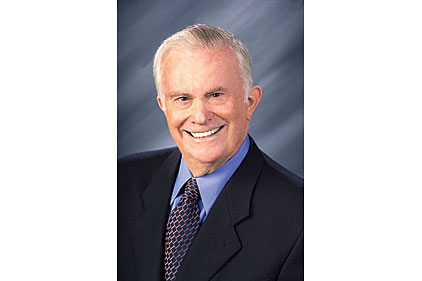By a dint of circumstances that could not have been foretold in the early part of this year, the latter stages of 2014 comprehensively accelerated across several economic U.S. sectors.
As late as Labor Day, what had been a disastrous first quarter, a so-so second quarter and a vastly improved third quarter became a prologue for the final quarter, trumping the earlier part of the year. This unforeseen optimism for 2014's finality, and a solid takeoff for 2015, has been due to the following circumstances that bode exceptionally well for the coming year.
Despite the Federal Reserve Board ending its series of quantitative easings in October, these have been replaced by an unexpected surge of monetary liquidity from all parts of the world, focusing on U.S. fixed and liquid assets, even including its near $18 trillion debt worthy of parking its discretionary spending. This has kept even the 10-year bond, considered the most popular designee of the U.S. Treasury yield curve, at the lowest interest rate and highest price since the end of the great financial recession.
U.S. exports continue to set new records as America’s versatile agriculture, oil derivatives, military hardware, commercial and military aircraft, plus industrial components grow at a fever pitch. This has not only shot exports above the $2 trillion mark for the first year ever in 2013, but is expected to be joined by the possibility of outward-bound crude oil plus propane, butane and other light-energy liquid supplements that recently reached unexpected peaks.
The unexpected drop in crude oil prices has been a boon to the retail sector with prices at the pump reaching multiyear lows, while not low enough to slow down the fracking revolution which is generating its highest breadth ever.
While Silicon Valley in Northern California has reached new heights of technological breakthroughs, smaller versions of that location have sprung up — even in the oil-fracking lead state of North Dakota.
While unemployment and the shortage of skilled workers continues to be a drag on an otherwise expanding economic “good-news” scenario, the shrinking of the most recent annual fiscal budget deficit, ending Sept. 30, indicates America’s overall economic mix is on the right track. However, the overall rejection of the administration’s policies of focusing on national health care, over-regulation, especially in the areas of energy development restraint and climatology purity distortion, is causing increasing concern by a major part of the U.S. public.
In summation, no nation in the 300-year history of the world’s industrial age has combined leadership in natural resources, technological superiority, a world-leading retail sector, exports and agriculture like the United States has.
Barring a further muddling of international instability, 2015 could well become America’s greatest year ever, not matched by any nation in history.
Even the results of the midterm elections received enthusiastically by independent businesses and millions of workers alike, have created a foundation for making 2015 America’s greatest launching pad ever.
Crude oil price ramifications
With the price of light sweet crude domestic oil dropping below the $70 per barrel level in late October after a multiyear $90-100-plus stretch not long after the official end of the great financial recession, the current slump in both foreign Brent crude as well as West Texas Intermediate has instigated the feasibility of further fracking expansion or even ongoing maintenance activity as 2015 gets underway.
Based on several contributory factors as well as expert input, the answer remains full-speed ahead.
Shale production, at current price levels, continues to be profitable even as hydraulic fracking became feasible during the recession when the price-per-oil barrel sank under $50. This was due to the technological leapfrogs made almost simultaneously during these dour economic down cycles.
But even when the world oil price jumped above the $100 mark, U.S. shale producers made good money at the $85 selling price level. This was true even as the spread between mainly U.S.-based WTI and world (Brent) prices deterred the refining and transportation of fracked WTI, which suffered from an obsolete and geographically dislocated pipeline transportation system. This hopefully will be resolved by a massive pipeline infrastructure connecting the shale excavation with a refinery infrastructure and systems upgrade reflecting the transportation interconnections dating back more than 50 years.
Major global oil/gas conglomerates and energy specialty companies are already developing projects amounting to $500 billion of private investment and showing no signs of slowing down. These investors, with their vision set on 2020 and beyond, are projecting oil and natural gas growth that may add as much as one-third-plus demand from the 90-million bpd figure that exists globally today.
Even fracking technology is making substantial headway that could bring costs and volume generation well below today’s cost levels and potential supply development that represents the 90% in the U.S. yet uncovered. Such developments are possible at even below the $80 bpd price level, and possibly lower, due to smarter drilling techniques, horizontal drilling, hydraulic fracturing and information technologies that accurately locate where to place rigs, thus enabling precise steering through the maze of hydro-carbon-rich shales. These are bound to be much more productive than when the boom started in 2008-09.
In the meantime, Saudi Arabia, Russia, Iran and disintegrating Iraq are stuck with their antiquated drilling methods and proliferating dry holes for which their outdated technologies leave little anti-U.S. retaliatory productive powers.
Even moderate results emanating from this country’s developing fracking locations ensures the unique American flexible geography, superior technology and hopefully a fast-growing infrastructure will make it and its NAFTA neighbors, Mexico and Canada, the undisputed global oil and natural gas supremacy factors in the foreseeable future.
Mid-sized businesses gain traction
Ever since the late 1970s when an increasingly sizable scope of America’s manufacturing sector, plus a surging percentage of consumer/commercial/retail demand found itself committed to foreign-based production, the size gap between large multinationals and hundreds of thousands of primarily family-owned independent establishments has widened.
Even though a huge number of rugged individualists were almost exclusively dedicated to “Made in the USA,” and more often than not catering to regional rather than national consumer demand, such operations relied on “serviceability.” Also important was the quality and security normally associated with the personal contacts generated by their “independent” status. Many of these establishments represented a multigenerational commitment from families who passed their lifelong business from one generation to the next.
At this juncture of the American post-great financial recession aftermath, a noticeable change is taking place in the makeup of the American business hierarchy. And at the forefront are the emerging middle-sized businesses that decided not to sell out to the corporate multinationals but also realize the importance of expansion in size, scope of offerings and, in many cases, regional exposure.
Utilizing my multi-decade involvement and intimate knowledge of such emerging middle-sized businesses representative of the $100 billion-plus plumbing-heating-cooling-piping sector, I’ve noted a major thrust in the growth of the “smalls,” and the subsequent lag in startups. These factors have generated substantially larger independent distributors, who provide broader product lines, service larger territories and are becoming substantially more sophisticated in the cost-savings and productivity from the accelerating updated technology now available.
This evolution, which is rapidly gathering steam, has been immeasurably aided by continued low interest rates and credit availability. In most cases, the accumulation of monetary liquidity has also had a salutary effect on overall expansion.
Simultaneously, statistics indicate that among this growing dynamic middle-sized business group of distributors, there is a significant lessening of estate-driven liquidation, sellout to larger competitors or a penchant for new startups.
Instead, the evolution of small- and middle-sized distributors into larger and more regionally dominant enterprises seems to be in the early stages of formidable development.
HELPFUL LINKS:




